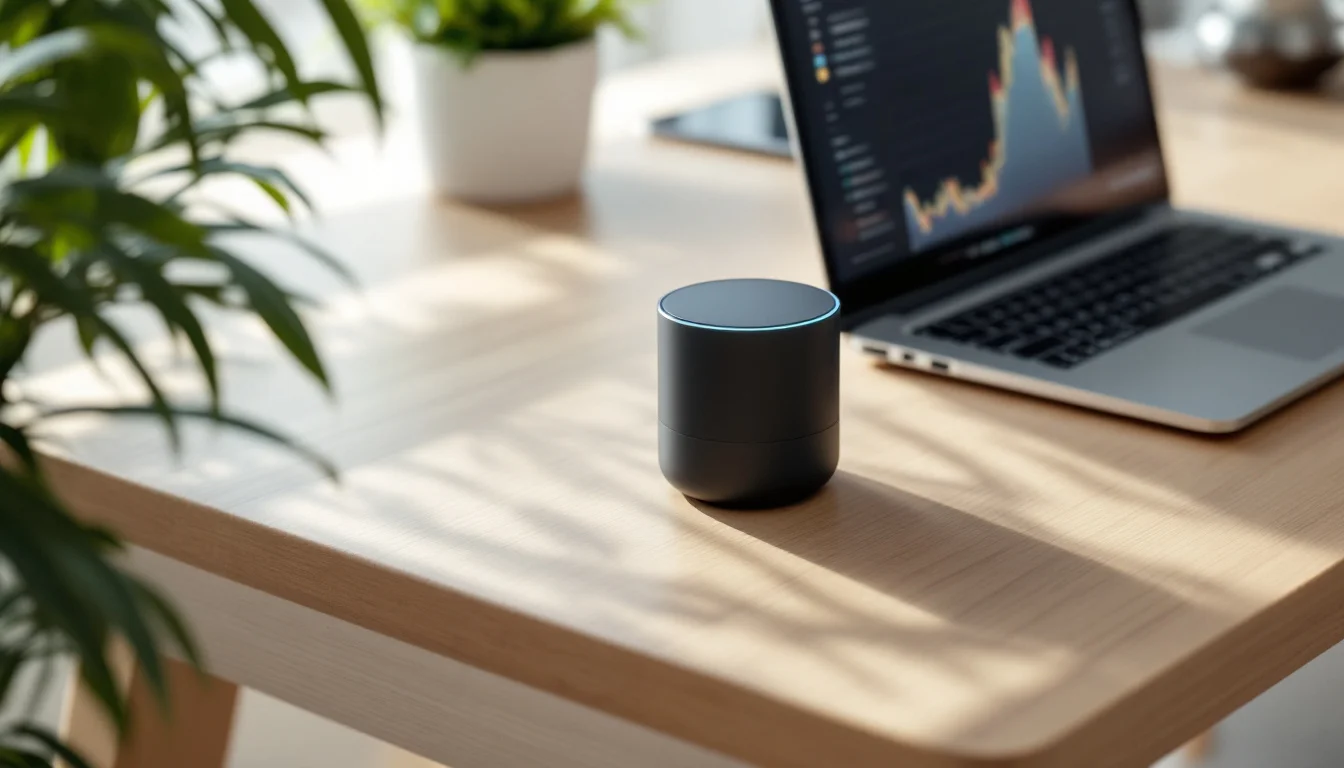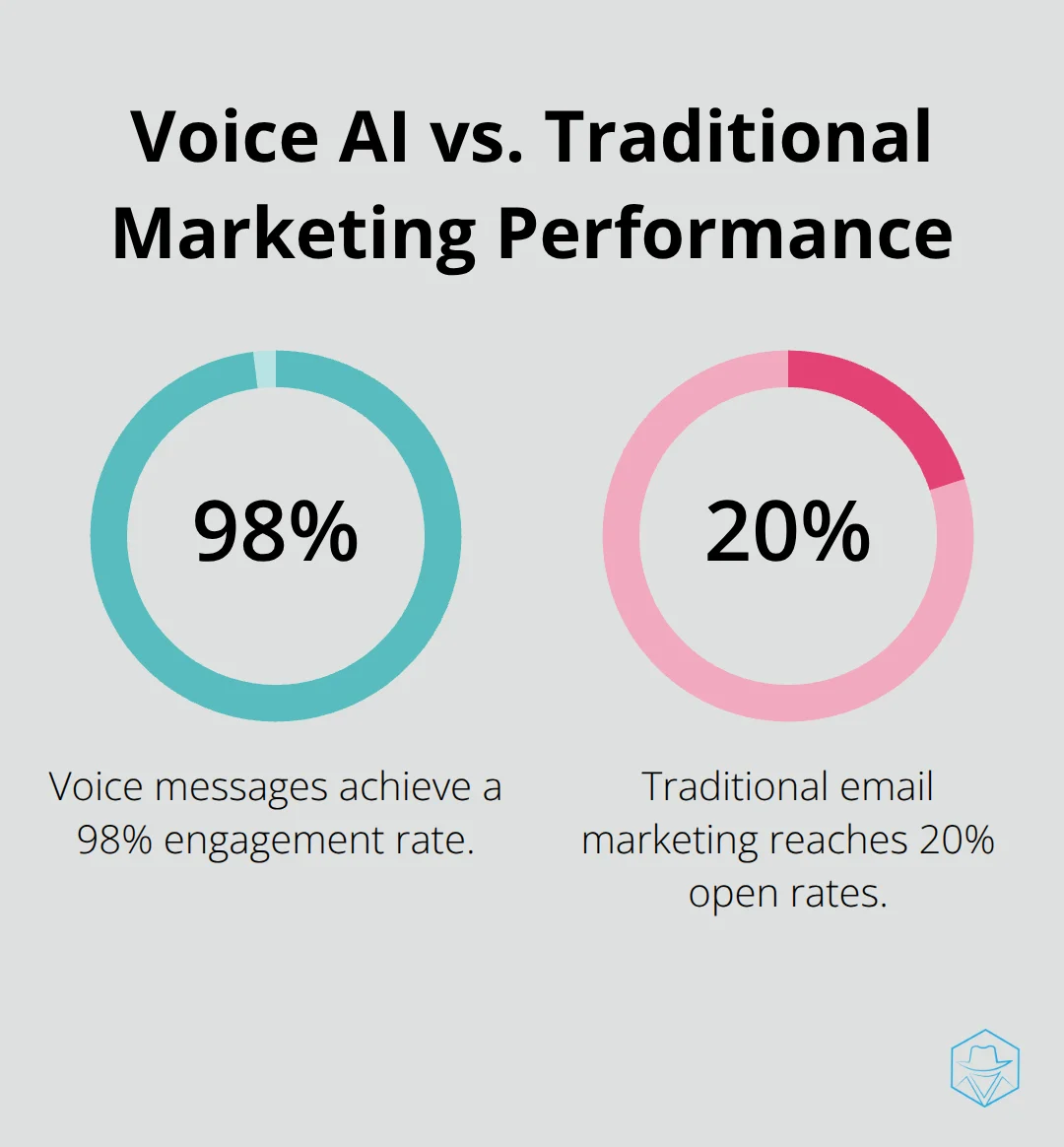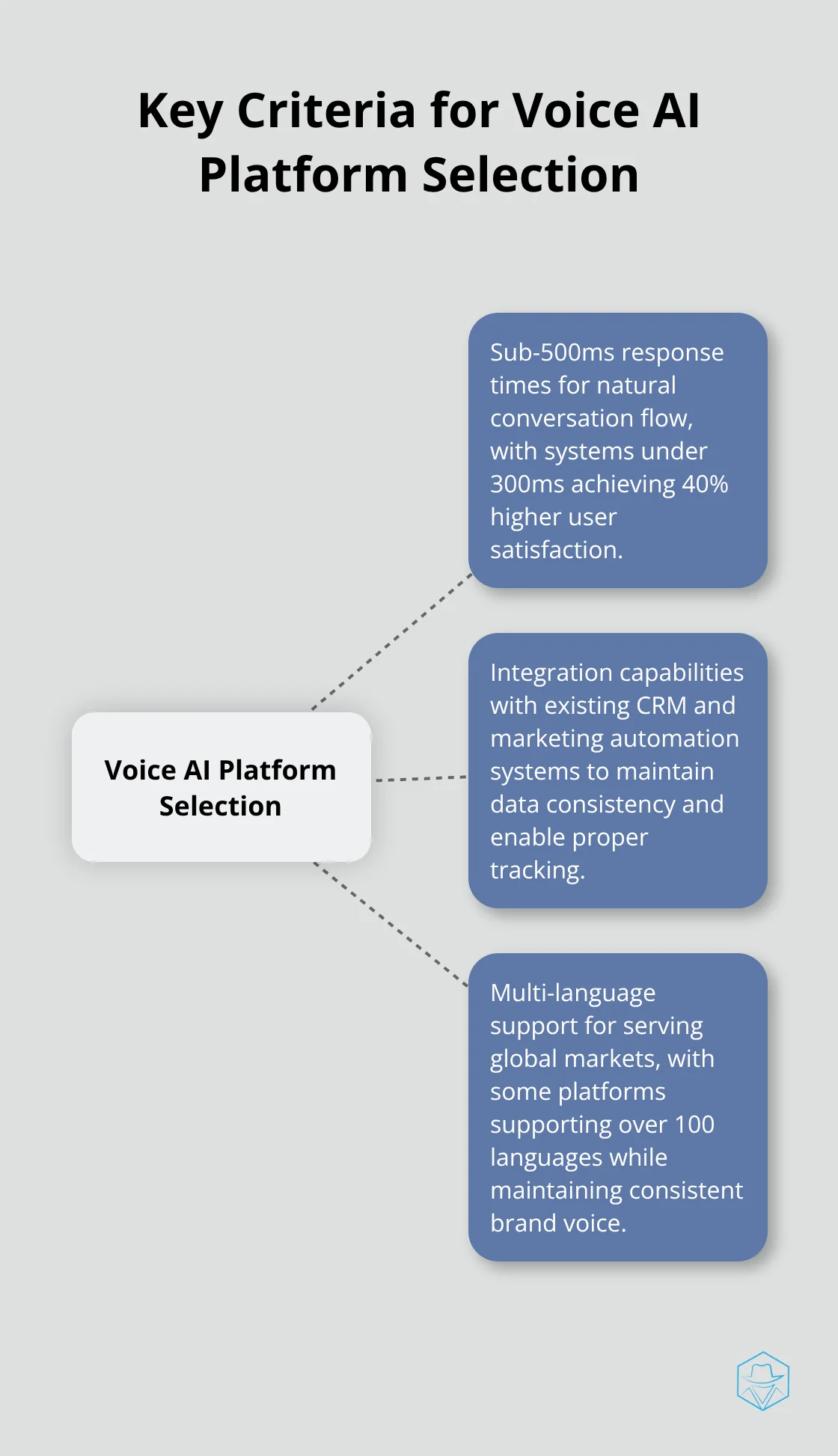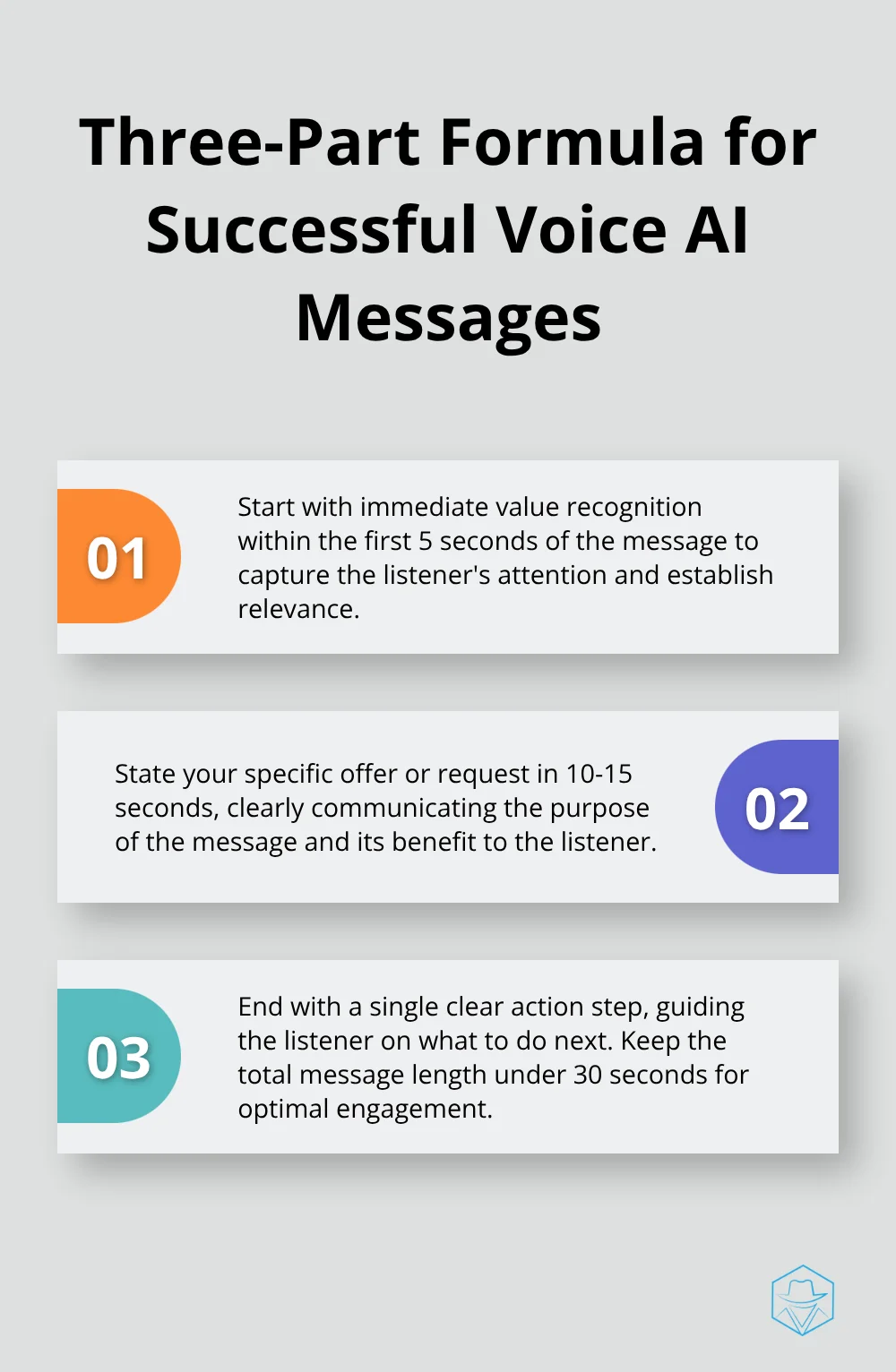Seamlessly Integrating Voice AI into Your Marketing Stack

Voice AI integration is transforming how marketing teams connect with their audiences. Companies using voice technology report 40% higher engagement rates compared to traditional outreach methods.
We at Drop Cowboy see businesses struggling to implement these powerful tools effectively. The key lies in strategic integration that aligns with your existing marketing infrastructure and goals.
What Makes Voice AI Different From Traditional Marketing
Speed and Processing Power
Voice AI technology delivers three transformative capabilities that traditional marketing tools cannot replicate. The technology processes natural language at superhuman speed and enables real-time conversation analysis with instant response generation. Voice AI creates personalized audio content at scale through voice cloning technology that needs only seconds of sample audio. It operates across multiple languages simultaneously, with platforms that support over 100 languages while they maintain consistent brand voice and tone.
Performance Metrics That Matter
The performance gap between voice AI and traditional marketing tools shows dramatic differences. Salesforce research demonstrates that companies with AI-powered voice systems achieve 35% higher contact rates and experience 25% less idle time than manual outreach methods. Traditional email marketing reaches 20% open rates, while voice messages consistently deliver 98% engagement rates (according to Mobilesquared data). Voice AI responds within 90 seconds on average, compared to hours or days that traditional customer service channels require.

Current Market Reality
Adoption statistics reveal that 97% of enterprises have implemented voice AI technology, with 98% that plan expanded deployments according to recent industry surveys. However, satisfaction remains low at just 21%, which indicates massive opportunity for businesses that implement voice AI correctly. This gap between adoption and satisfaction points to implementation challenges that most companies face.
The technical infrastructure and strategic planning requirements separate successful voice AI implementations from failed attempts. Companies that master these elements position themselves to capitalize on the next phase of marketing evolution.
How Do You Build Your Voice AI Marketing Foundation
Inventory Your Existing Marketing Infrastructure
Most marketing teams waste months with voice AI implementation because they skip the foundation work. Start with a complete audit of your current technology stack, including CRM systems, email platforms, marketing automation tools, and customer data sources. Document every integration point and data flow between these systems. HubSpot research shows that companies with documented marketing stacks achieve 67% faster AI implementation compared to those without proper documentation.
Map your customer journey touchpoints to identify where voice AI can create the highest impact. Focus on high-volume, repetitive tasks that currently drain your team’s time and resources.
Select Voice AI Platforms Based on Technical Requirements
Platform selection determines your success rate more than budget allocation. Evaluate providers based on three non-negotiable criteria: sub-500ms response times for natural conversation flow, integration capabilities with your existing CRM and marketing automation systems, and multi-language support if you serve global markets.
AssemblyAI data indicates that voice systems with response times under 300ms achieve 40% higher user satisfaction scores. Platforms like Vapi and Daily/Pipecat offer building blocks for custom implementations, while all-in-one solutions provide faster deployment at the cost of flexibility.
Test each platform’s voice quality with Mean Opinion Score ratings above 4.0 for human-like interactions. Gartner forecasts 50% growth in AI-powered voice dialer usage over the next two years (making early adoption a competitive advantage).

Execute Implementation Through Staged Rollouts
Implementation success depends on controlled test phases rather than full-scale launches. Begin with a pilot program that targets 10% of your audience with one specific use case, such as follow-up calls or appointment confirmations. Measure contact rates, conversion metrics, and customer feedback during the initial 30-day period.
Companies with staged rollouts report 80% fewer technical issues and 25% higher adoption rates according to Forrester research. Integrate voice AI with your CRM system first to maintain data consistency and enable proper tracking. Configure automated workflows that trigger voice messages based on customer actions or time delays.
Scale successful pilot programs gradually while you monitor performance metrics and adjust message strategies based on real-time feedback data. This systematic approach positions your team to tackle the next phase: crafting voice messages that actually convert prospects into customers.
How Do You Create Voice Messages That Actually Convert
Message Structure That Drives Action
Successful voice AI messages follow a proven three-part formula that maximizes conversion rates. Start with immediate value recognition within the first 5 seconds, state your specific offer or request in 10-15 seconds, and end with a single clear action step. Messages longer than 30 seconds see 60% lower callback rates according to Direct Marketing Association research.
Personalization increases click-through rates by 42% when you reference specific customer data like recent purchases or behavior patterns. The most effective voice messages address customers by name and reference their last interaction with your business. Avoid generic scripts that sound robotic or overly promotional.

Optimal Contact Windows and Message Frequency
Voice outreach success depends more on precise contact windows than message content or personalization. Mobilesquared data shows that messages sent between 10 AM-12 PM and 5 PM-9 PM achieve the highest response rates, with Tuesday through Thursday delivery times producing 35% better results than Monday or Friday attempts.
Contact frequency should never exceed three touchpoints per week to prevent customer fatigue and maintain positive brand perception. Companies that space voice messages 48-72 hours apart report 25% higher conversion rates compared to daily contact schedules. Test send times based on your specific audience demographics rather than follow generic best practices.
Performance Metrics and Campaign Optimization
Track four essential metrics to optimize your voice AI campaigns: contact rates, callback percentages, conversion rates, and customer satisfaction scores. Businesses that monitor these KPIs refine strategies with real-time data analytics and achieve 30% better campaign performance.
A/B testing different message formats, call-to-action phrases, and send times optimizes effectiveness over time. Segmented audiences generate up to 760% higher revenue from voice campaigns when you tailor messages to specific customer behaviors and preferences (making audience segmentation a priority for maximum ROI).
Review campaign data weekly and adjust message strategies based on response patterns. Voice AI campaigns require continuous refinement based on customer feedback and performance metrics rather than set-and-forget approaches.
Final Thoughts
Voice AI integration delivers measurable results that traditional marketing methods cannot match. Companies that implement voice technology report 40% higher engagement rates, 35% increased contact rates, and conversion improvements of up to 25%. The 98% engagement rate for voice messages compared to email’s 20% open rate demonstrates the power of this technology shift.
Success requires strategic implementation rather than rushed deployment. Start with a comprehensive audit of your current marketing stack, select platforms with sub-500ms response times, and execute staged rollouts that target 10% of your audience initially. Focus on personalized messages under 30 seconds that reference specific customer data and behaviors.
The market opportunity is substantial with 97% of enterprises that adopt voice AI but only 21% express satisfaction (which means businesses that implement correctly gain significant competitive advantages). Gartner forecasts 50% growth in AI-powered voice technology usage over the next two years. Drop Cowboy provides the infrastructure needed for successful voice AI campaigns through advanced automation capabilities and performance tracking tools.
blog-dropcowboy-com
Related posts

March 21, 2025
AI in Marketing Automation: Transforming Customer Engagement
Explore how AI in marketing automation is reshaping customer engagement by boosting personalization, efficiency, and driving growth rapidly.

May 28, 2025
How to Choose the Best CRM System for Recruitment
Select the ideal CRM system for recruitment. Optimize your hiring process with informed choices and boost team efficiency effortlessly.

February 26, 2025
Choosing the Right Ringless Voicemail Service Provider
Explore tips for choosing the right ringless voicemail service and make informed decisions with ease. Learn key factors and avoid common pitfalls today!

June 2, 2025
Top-Rated Real Estate CRM: Boost Your Agency’s Efficiency
Boost your agency’s efficiency with a top-rated real estate CRM. Discover essential features and advantages for streamlined operations today.

June 16, 2025
Conversational Messaging: The Future of Customer Engagement
How long does your business take to respond to a customer message? According to Philomath Research, studies show that 82% of consumers expect an immediate response when they have a question. This shift in expectation has made real-time communication more than a convenience… It’s now a requirement. Conversational messaging meets this demand by offering fast, personalized, two-way interactions that […]

July 20, 2025
SimpleTexting Review: Is It Worth It?
Explore our SimpleTexting review to see if it’s worth it. Learn the pros, cons, pricing, and user opinions of this text marketing service.